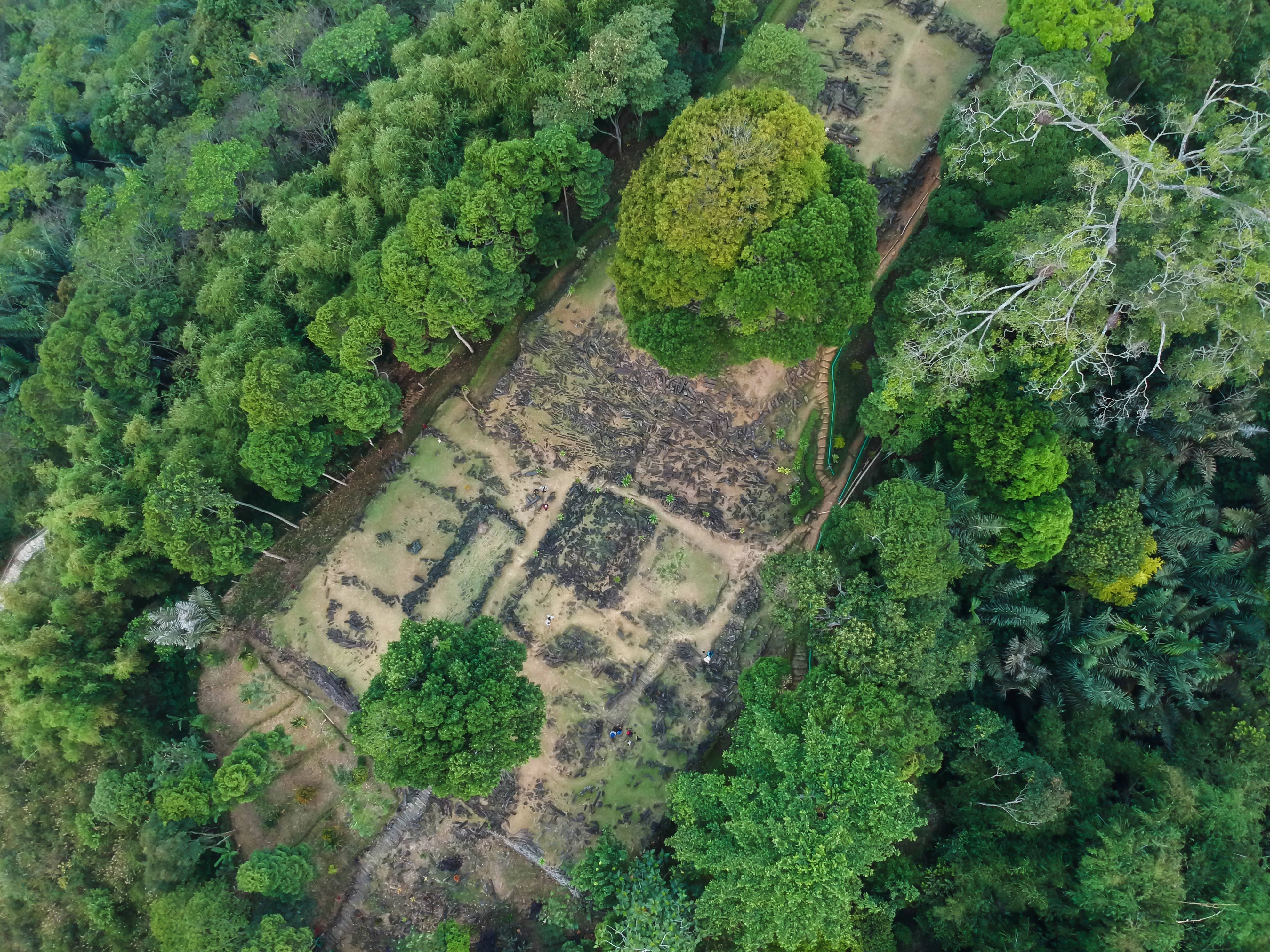Gunung Padang sits on top of an extinct volcano in West Java, Indonesia. In recent times, the beautiful hilltop has attracted bold theories that suggest it was an elaborate pyramid built by a long-lost civilization thousands of years before the pyramids of Egypt. As enticing as this idea may be, it’s one that’s founded on extremely shaky evidence.
Gunung Padang, which means “mountain of enlightenment’ in the local language, does indeed look like a pyramid-shaped mound overgrown in vegetation from afar. Upon closer look, things become even more interesting: you’ll see the top of the hill is broken down into a series of terraces, scattered with hundreds of pillar-like volcanic rocks.
Humans have visited and used Gunung Padang for thousands of years. This is confirmed by pottery fragments found at the site by Indonesia’s National Archaeological Research Center and the Bandung Archaeological Center, which have been dated from 45 BCE to 22 CE.
However, it is one thing to claim that ancient humans have used the hilltop for millennia, it’s quite another to suggest the entire site was artificially constructed by an advanced civilization thousands upon thousands of years ago.
In October 2023, archaeologists published a paper in the journal Archaeological Prospection that claimed Gunung Padang was an ancient pyramid built at least 9,000 years ago, with parts of the structure as old as 25,000 years old. They even said their scans indicated the presence of hidden chambers within the mound.
“This finding challenges the conventional belief that human civilization and the development of advanced construction techniques emerged only during the warm period of the early Holocene or the beginning of the Neolithic, with the advent of agriculture approximately 11,000 years ago,” the study authors wrote.
“However, evidence from Gunung Padang and other sites, such as Gobekli Tepe, suggests that advanced construction practices were already present when agriculture had, perhaps, not yet been invented,” they add.
An aerial view of Gunung Padang.
Image credit: Ade Lukmanul Hakimmm/Shutterstock.com
Although the study attracted plenty of media attention, including from IFLScience, it did not go down well with the academic community. By March 2024, the journal retracted the paper after “concerns were raised by third parties with expertise in geophysics, archaeology, and radiocarbon dating.”
The prime problem with the research, which hadn’t been identified during peer review, involved the dating of soil samples that the paper falsely suggested were part of some human-made feature.
“If you went to the Palace of Westminster and dropped a core 7 meters [23 feet] into the ground and pulled up a soil sample you might date it as being 40,000 years old. But that does not mean the Palace of Westminster was built 40,000 years ago by ancient humans. It just means there’s carbon down there that’s 40,000 years old. It is extraordinary that this paper has been published,” Flint Dibble, an archaeologist at Cardiff University, told the Observer in 2023, commenting on the now-retracted paper.
Parts of the paper were reportedly proofread by Graham Hancock, a British writer known for espousing the unfounded idea that Earth was home to a long-lost civilization over 12,000 years ago. Hancock even featured Gunung Padang in the first season of his Netflix series, which many experts have denounced as “pseudoarchaeology”.
As he suggests in the show, many of the column-like rocks at the site feature sharp angles that could be misinterpreted as the fallen columns or steps of a human-made structure. However, it’s very well-established that volcanoes can produce peculiar geological formations like this. Known as columnar jointing, it’s a phenomenon seen in the natural world across the planet, from the coast of the UK to Devils Tower in Wyoming.
Furthermore, it’s also been contested that the surface rocks are a similar type and composition as the buried bedrock, suggesting a natural formation process via volcanism.
One of the main challenges that Gunung Padang faces is its tropical environment. Subject to deluges of rain, as well as a moist and warm environment that’s ideal for molds and decomposition, archaeological remains do not tend to fare well in tropical regions. This can make excavations difficult, especially at sites like Gunung Padang where archaeologists must decipher what’s natural and what’s been crafted using human ingenuity.
Gunung Padang undoubtedly deserves further archaeological excavations, and it’s hard to imagine that scientific studies won’t reveal more fascinating insights into the site. However, any suggestions that this handsome mound could radically rewrite human history should be taken with a healthy dose of skepticism.
Source Link: Gunung Padang: Java's Ancient Site Of Volcanism, History, And Controversy
